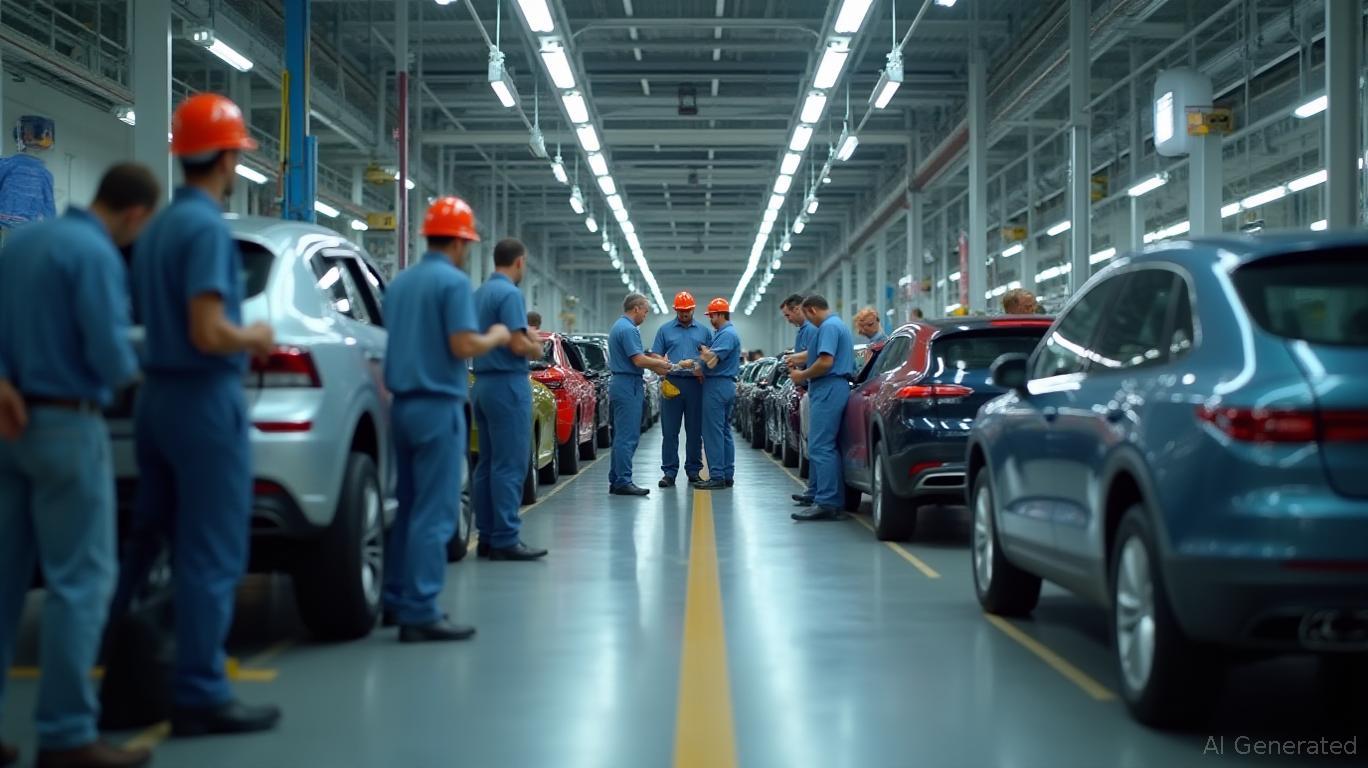Porsche's U.S. Manufacturing Gambit: Navigating Tariffs, Supply Chains, and Strategic Realignment
The automotive industry is bracing for seismic shifts as Porsche contemplates its first-ever U.S. assembly plant—a move driven by the escalating threat of Trump-era tariffs and the need to stabilize supply chains. This strategic pivot underscores a broader industry reckoning: how to balance profitability with geopolitical volatility in an era of trade wars. For investors, the stakes are high: Porsche's decision could unlock opportunities in U.S. automotive suppliers while exposing risks tied to tariff policy uncertainty.

The Tariff Conundrum: Why Porsche is Considering a U.S. Shift
Since April 2025, a 25% Section 232 tariff has been levied on automobiles imported from the EU, with an additional 25% on parts by May. For Porsche, this is existential: nearly all its U.S. sales—76,167 units in 2024—rely on German-made vehicles. The proposed tariffs could force a 50% price hike on models like the $115k Porsche 911, potentially pricing buyers out of the market.
To mitigate this, Porsche and Audi are exploring U.S. assembly, leveraging Volkswagen's existing Chattanooga plant. This facility, currently producing 175,000 vehicles annually (Atlas SUVs and ID.4 EVs), has spare capacity to add high-margin Porsche models like the Cayenne SUV or the upcoming flagship K1.
Operational Costs and Supply Chain Resilience
The financial calculus is clear: local production eliminates tariffs, preserving profit margins. However, relocating assembly to the U.S. entails upfront costs—refitting plants, training workers, and reorienting supply chains.
Yet there's a silver lining. The Inflation Reduction Act's EV incentives and U.S. consumer demand for SUVs (which account for 80% of Porsche's sales) create tailwinds. The Chattanooga plant's proximity to Tennessee's automotive supplier ecosystem—already serving Volkswagen—could reduce logistics costs.
Competitive Positioning in a Tariff-Ridden Landscape
Porsche lags peers like Mercedes and BMW, which already assemble SUVs in the U.S. (Tuscaloosa and Spartanburg, respectively). By skipping local production, Porsche risks ceding market share to rivals shielded from tariffs.
Legal and geopolitical risks complicate matters. While Section 232 tariffs remain in effect pending court appeals, the EU's threat of retaliatory measures—targeting U.S. aircraft and medical devices—adds uncertainty. Investors must weigh whether tariffs will endure or unravel, altering cost structures entirely.
Investment Opportunities and Risks
Opportunity #1: U.S. Suppliers in the Spotlight
Volkswagen's Chattanooga expansion could boost demand for local suppliers like Lincoln Electric (LECO) (welding equipment) or Hanon Systems (AMK) (thermal management). Similarly, Tennessee's Ryder System (R) (logistics) and South Carolina's Michelin (ML) tires stand to benefit from increased production volumes.
Opportunity #2: EV Infrastructure Plays
Porsche's K1 flagship SUV and Audi's potential Scout-branded EVs align with U.S. EV incentives. Investors might consider Tesla (TSLA) (for battery tech synergies) or Plug Power (PLUG) (hydrogen fuel cells for heavy vehicles), though these are indirect beneficiaries.
Risk #1: Tariff Volatility
If tariffs are rolled back—a possibility if the courts permanently strike them down—Porsche's U.S. investment could become a stranded asset.
Risk #2: Overexposure to Geopolitical Whiplash
Companies with heavy EU-U.S. trade ties, like Caterpillar (CAT) or Boeing (BA), face dual risks: retaliatory tariffs and supply chain disruptions.
Conclusion: A Double-Edged Sword
Porsche's U.S. assembly plan is a pragmatic response to tariff pressures, but it's far from risk-free. For investors, the key is to distinguish between short-term plays—like supplier stocks tied to Chattanooga—and long-term bets on EV infrastructure. Monitor tariff policy closely: if the courts uphold tariffs, U.S. auto suppliers will thrive; if not, the sector could face a correction.
In a world where trade wars are fought with tariffs and tariffs are fought in courts, investors must stay agile—leaning into resilience while hedging against volatility.
This article synthesizes strategic, financial, and geopolitical factors to guide investors through a complex landscape. While Porsche's move signals industry-wide realignment, the ultimate winners will be those positioned to navigate both opportunity and risk.

Comments
No comments yet